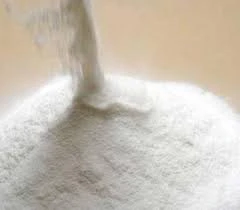Chemical Thickening Agents An Overview
Thickening agents, also known as thickeners, are substances that increase the viscosity of a liquid without substantially changing its other properties. They are widely used across various industries, including food, cosmetics, pharmaceuticals, and paint, due to their ability to enhance the texture and stability of products. This article aims to explore the importance, types, and applications of chemical thickening agents.
Importance of Thickening Agents
Thickening agents play a crucial role in the formulation of products. In the food industry, for instance, they help enhance the mouthfeel and texture of sauces, dressings, and soups. By increasing viscosity, they create a more appealing product and improve sensory properties, ultimately influencing consumer preferences. In cosmetics, thickeners help achieve the desired consistency of creams, lotions, and gels, ensuring that they are easy to apply and absorb smoothly into the skin.
Moreover, thickening agents can stabilize emulsions, preventing the separation of oil and water phases in products like mayonnaise or lotions. This enhances the shelf life and overall quality of the products, which is vital in maintaining brand reputation and consumer trust.
Types of Chemical Thickening Agents
There are several types of thickening agents, each with unique properties and applications. They can be broadly categorized into natural and synthetic thickeners.
'chemical thickening agent'

1. Natural Thickening Agents These are derived from plant or animal sources. Common examples include - Starch Sourced from corn, potatoes, or tapioca, starch is widely used in cooking and baking to thicken sauces and soups. It gelatinizes upon heating, which allows it to absorb water and swell, providing thickness. - Guar Gum Extracted from the guar bean, this polysaccharide is used in baked goods, dairy products, and sauces due to its high thickening efficiency even at low concentrations. - Xanthan Gum Produced by fermentation of sugars by the bacterium Xanthomonas campestris, xanthan gum is a versatile thickener and stabilizer widely used in gluten-free products and salad dressings.
2. Synthetic Thickening Agents These are artificially created through chemical processes. Examples include - Carbomers Synthetic polymers that are used in cosmetics and pharmaceuticals, they provide a smooth texture and hold formulations together effectively. - Polyethylene Glycol (PEG) Employed in a variety of applications, PEGs create a gel-like consistency that is particularly useful in topical formulations.
Applications of Thickening Agents
Thickening agents find use in numerous applications beyond food and cosmetics. In pharmaceuticals, thickeners are essential for formulating syrups and suspensions, ensuring the active ingredients are evenly distributed and easily consumed. In the paint industry, thickening agents help achieve the desired consistency, enabling smooth application without dripping or running.
Furthermore, in the paper and textile industries, thickeners are used to improve the adhesion of dyes and pigments, ensuring even coverage and vivid colors. This versatility showcases the importance of thickening agents across diverse sectors.
Conclusion
Chemical thickening agents are indispensable components across many industries, enhancing product texture, stability, and aesthetic appeal. Whether derived from natural sources or produced synthetically, these agents contribute significantly to the quality and consumer satisfaction of various products. As industries continue to evolve, the development and application of innovative thickening agents will remain a key area of focus, driving future advancements in formulation science. Understanding their properties and applications is essential for manufacturers aiming to create superior products that meet consumer demands in an ever-competitive market.
-
Rdp Powder: Key Considerations for Wholesalers in the Building Materials IndustryNewsJul.08,2025
-
Key Considerations for Wholesalers: Navigating the World of Hpmc - Based ProductsNewsJul.08,2025
-
Hpmc Detergent: Key Considerations for WholesalersNewsJul.08,2025
-
Key Considerations for Wholesalers: China Hpmc For Tile Adhesive, Coating Additives, Concrete Additives, and MoreNewsJul.08,2025
-
Crucial Considerations for Wholesalers: Navigating the World of Construction MaterialsNewsJul.08,2025
-
Key Considerations for Wholesalers Sourcing Additive For Cement, Additive For Concrete, Additive For Putty from Additive Manufacturer Shijiazhuang Gaocheng District Yongfeng Cellulose Co., Ltd.NewsJul.08,2025




